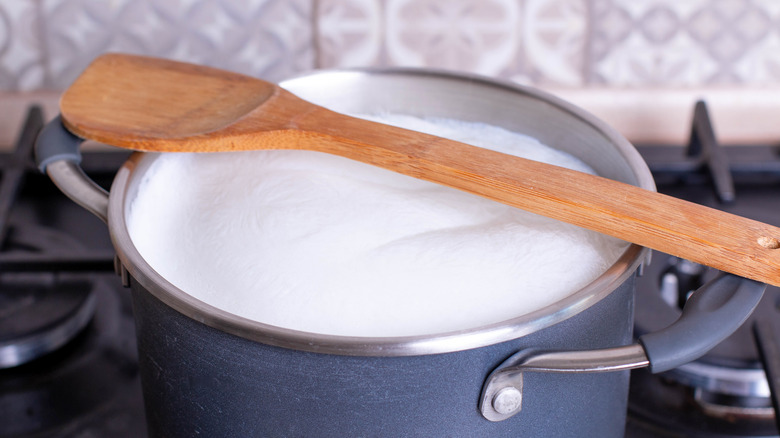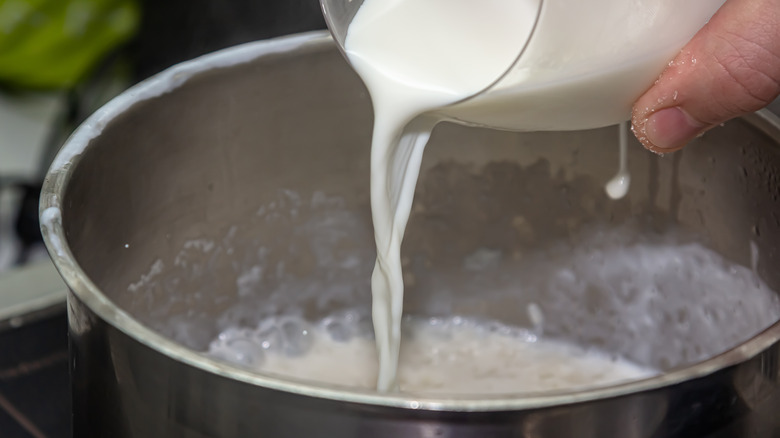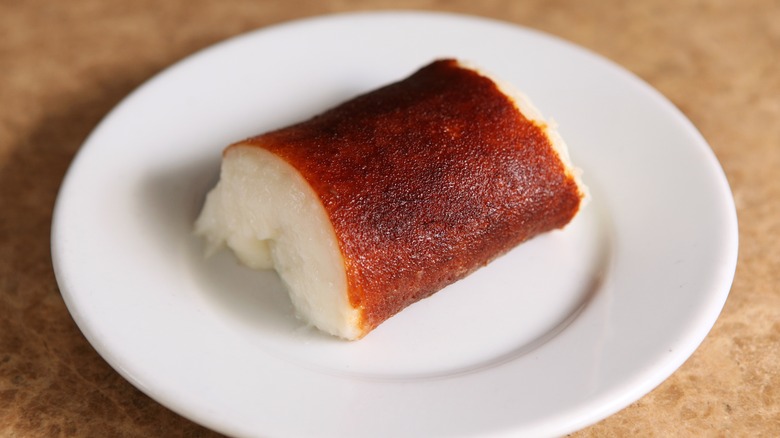Fix Burnt Milk With An Effortless Hack
While some people might cry over spilled milk, burnt milk is not only an unpleasant taste, but the odor is equally pungent. Instead of pouring that liquid down the drain, a few simple, easy additions can salvage that cooking mistake.
Even with a watchful eye, the slow-warming or cooking milk can turn into a bubbly, burnt mess. After transferring your milk to a fresh pan, look to the spice rack for assistance. One option to avoid that scorching scenario is to add a little salt. Although it will not necessarily totally transform the liquid, the seasoning can help to mask the burnt odor and flavor. It does not require an entire shaker's worth but is more than a pinch. Consider starting with a smaller amount, tasting, and adding more if needed.
The added salt does not necessarily counteract the burnt characteristic; instead, it masks the flavor by punching up the acidic component. Salt can heighten sweet notes in a recipe, similar to how a salted caramel cookie gets a sugary boost from the salt. This cooking hack uses seasoning ingredients to bring overall balance. After all, burnt milk is usable. The unaltered flavor might not be the most pleasant, but it does not have to be wasted. Instead of throwing salt over the shoulder for luck, throw it into the pan to help avoid a cooking disaster.
What other spices can mask a burnt milk flavor?
While salt can help neutralize a burnt milk flavor, other spices can help to mask the offending taste. For example, cinnamon can help to lessen the burnt notes. Add a few cinnamon sticks after transferring the liquid to a new pan. Cinnamon has an earthy, spicy flavor, which can become the predominant note. Although cinnamon powder can work, whole sticks are better because they can be removed from the milk once it is off the stove. It helps to take away the unpleasant flavor but does not fill the pan with cinnamon milk.
Another option is cardamom. The pungent pod has an abundant fragrant note. Adding the pods to the milk and allowing it to simmer seems to absorb the scorched notes. Like the cinnamon sticks, cardamom pods should be removed before using the milk in a recipe.
With these options and the salt addition, the idea is to cover up the negative flavor with a more powerful, pleasant one. Since it is impossible to fix the cooking error, the next best thing is to use a solution that does not require starting over.
Do some recipes specifically call for burnt milk?
While the pungent, overcooked odor might have some people running from the kitchen, some recipes actually call for burnt milk. Although it might seem counterintuitive to have an overcooked ingredient, that flavor balanced with others can be enjoyable.
Kazandibi, Turkish Burned Milk pudding, requires that blackened moment to bring out all the flavor. As the bottom layer turns from a golden to a brackish color, the cook needs to embrace the idea that there is delicious flavor in the burnt note, as seen in the popularity spike of burnt-flavored snacks. The other flavors in the recipe, from rose florals to piney mastic, mask the acrid note.
The difference between an enjoyable burnt flavor and an inedible bite is a delicate balance. Finding the confidence to take the milk to the edge can require practice. Still, appreciating that the burnt milk does not have to hit the drain is a good reminder every cooking error does not have to result in food waste. Even if it is beneficial to avoid cooking mistakes, a smart cooking hack can bring many ingredients back from the brink of disaster.


